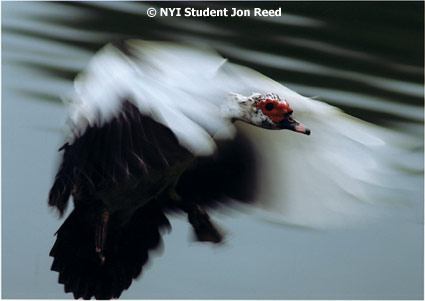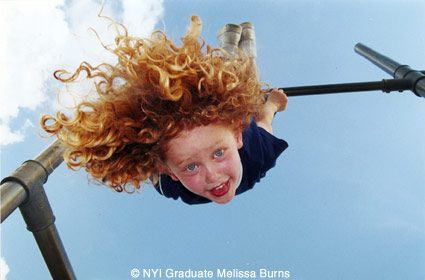
Birds in flight have always been popular photographic subjects but present unique challenges. Of course, anything in motion can be difficult to capture with the camera, especially if the motion is erratic, the background confusing, or the light poor. But bird photography has another problem – identification. Many birds freely cross with related species and the resulting hybrids typically exhibit only some of the characteristics of the parents. Furthermore, the juveniles often look nothing like the adult bird. Precise identification is not usually important for amateurs but is critical for pros shooting for the stock photography market. It often takes a real expert to pin it down.
My personal experience is mostly confined to photographing North American water fowl, like the Great Blue Heron, the White Egret, and others, all fairly common species and easy to identify. But this bird stumped me for a while. It looked like some kind of duck but nothing I had ever seen. The facial markings, however, were an important clue and as it turned out, rather unique. After a little research (with the help of my son, the naturalist), I finally decided that this must be a Muscovy duck, a species that evidently was domesticated by Native Americans back before Columbus arrived though the species still exists in the wild. But I can't go beyond a general identification.
So how about this photo by NYIP Complete Course in Professional Photography student Jon Reed? Even if you were not familiar with the species you would know it was a bird in flight. It's pretty obvious that's the subject. As for focusing attention on the subject, that's pretty straightforward too. The bird is large in the frame, more or less centered, and up close. The blur of the wings indicate that the bird is indeed flying, not the subject of the taxidermist's art. Happily the head is pretty sharp and contrasts nicely with the white part of the wings. Is that the result of precise timing on the part of the photographer or simply a serendipitous bit of luck? Hard to say but the result works very well. In any event, I can tell you from experience that successful action photography of any kind always involves a bit of luck.
Any extraneous elements in the image we can remove in order to simplify it? What about those blurred diagonal dark lines in the upper part of the background? Well, they actually serve a two-fold purpose. One, to emphasize the movement of the bird from left to right, the blur being the result of panning with the camera. And two, they help the white wings stand out. Contrast, especially local as distinguished from overall or global, is an important factor in any photograph, helping to delineate form and separate one element in the composition from another. It's critical in black & white photography and while this is a color image, most of it consists of black & white elements. So I would leave those background lines strictly alone.
Anything we can do to improve the photo? Well, I might lighten the head a bit so we could see the detail better, as I did here. I would argue that the bird's head is the most important part of the subject and I would like to see it more clearly.
Are birds descended from the dinosaurs? That's a question that has nothing to do with photography or this photo but it's a question that piques the interest of many people, including myself. Looking at Muscovy's face reminds me of a model I saw of Archaeopteryx, a creature of the late Jurassic Period and often considered a link between dinosaurs and birds though perhaps not a direct ancestor. True, there's not much similarity between Archaeopteryx and Muscovy, considering the fact that the former had sharp teeth. The model did show some red features reminiscent of those on Muscovy but in point of fact we don't really know what color Archaeopteryx was. But it's fun to speculate.
Still, I think Jon Reed did an excellent job capturing a difficult subject. Bravo!






